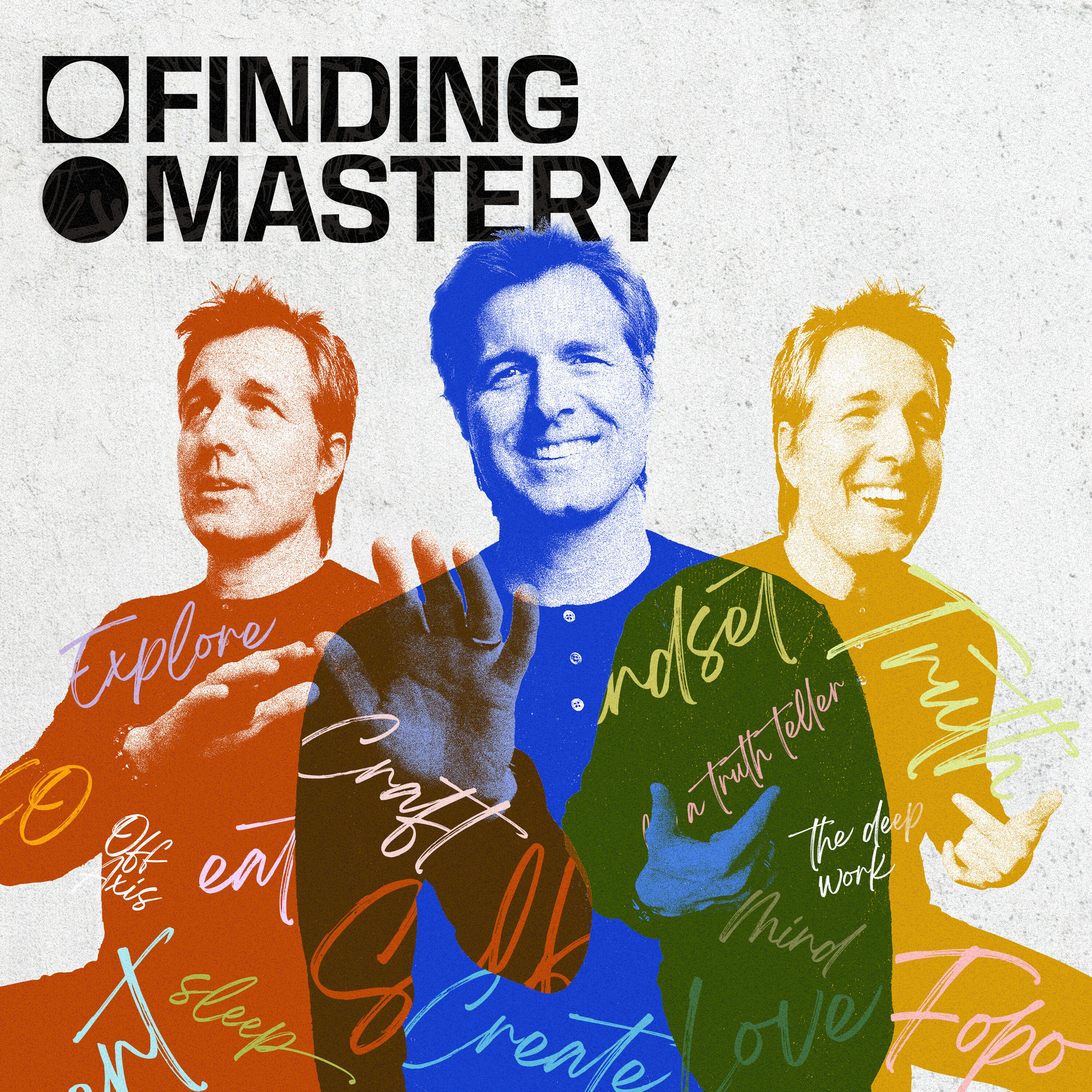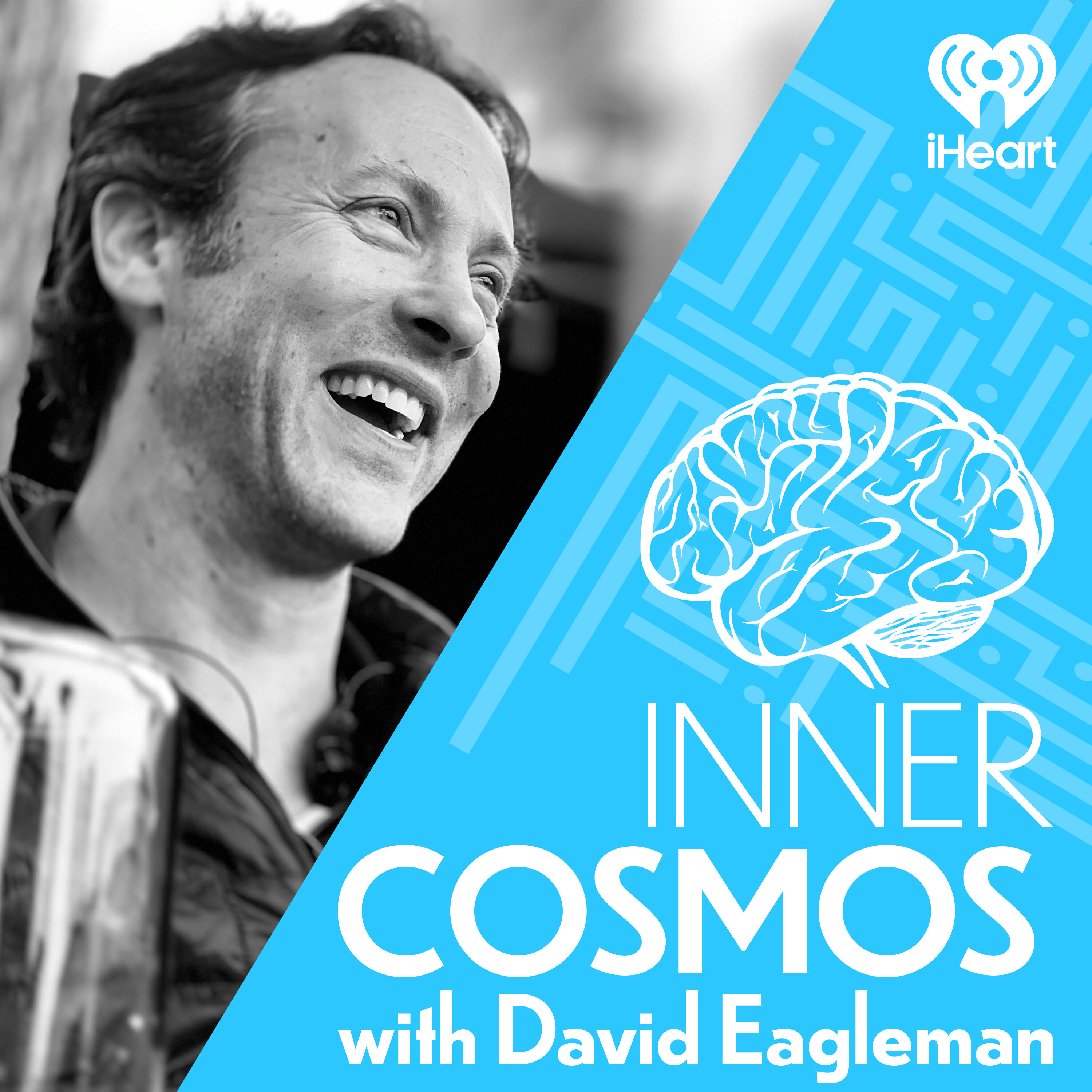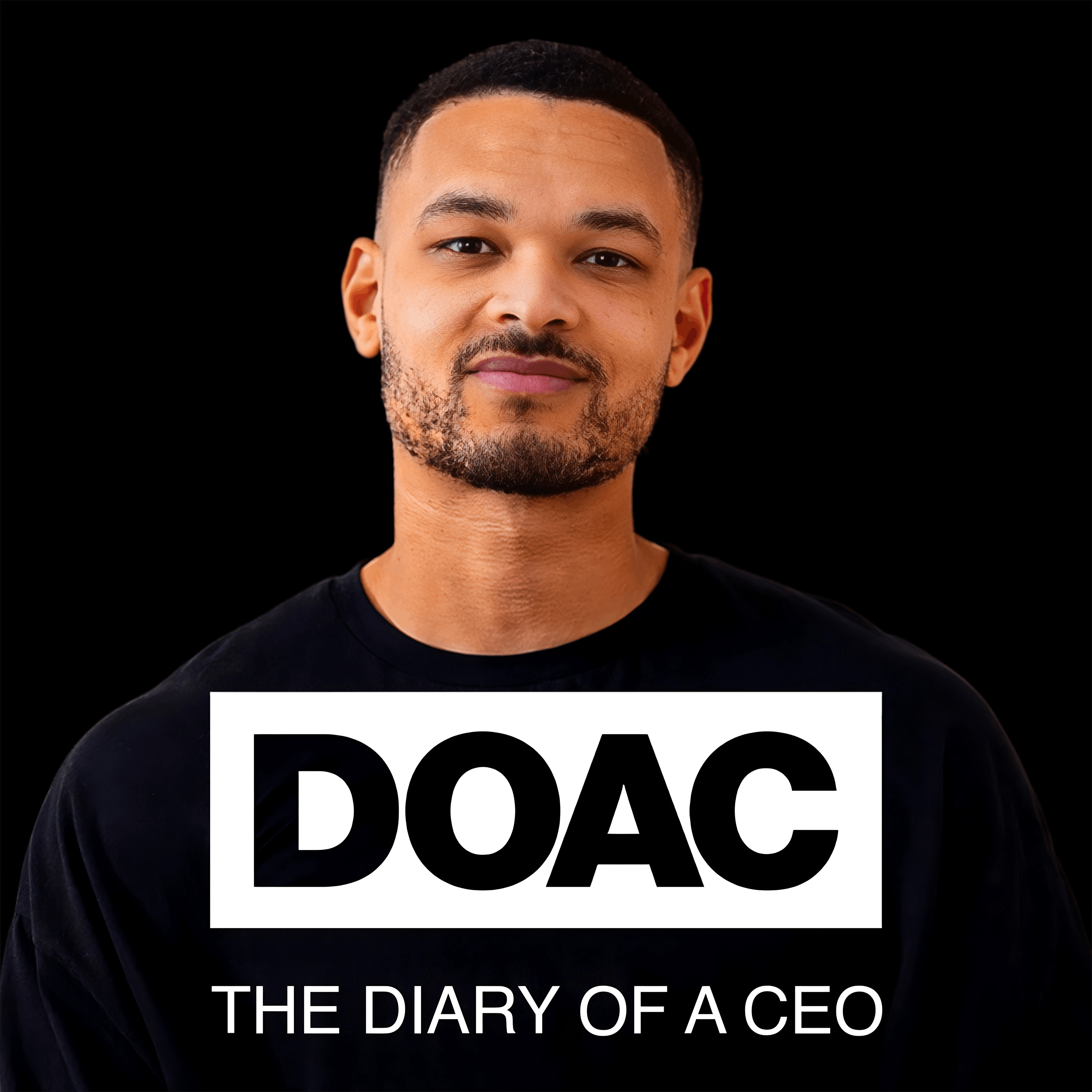
Change Wired
Change Wired: Change in days - not in years!
Ready to ditch slow change and start thriving sooner?
Change Wired is your new favorite podcast for practical, punchy insights into personal growth, productivity, mindset mastery, and creating high-performing, purpose-driven, thriving cultures.
Hosted by an Executive & High-Performance Coach with 15 years of global experience (who now runs a culture transformation consulting & coaching firm), each episode breaks down science-backed tools from biology, neuroscience, psychology of change and systems thinking into actionable tips you can start using today.
Expect lively solo episodes, inspiring guests, and real-world strategies designed specifically for leaders, entrepreneurs, and growth-focused professionals eager to accelerate their impact—both personally and within their teams & communities.
Tune in, wire your brain for change, and get ready to transform in days - not years!
Change Wired
How to beat laziness, procrastination and resistance to change in one move. 3P formula to turn "I should" into "I'm ready to go"
TUNE IN TO LEARN:
What if I told you that laziness doesn't exist?
That what we think of as resistance—in ourselves and others—is actually just a lack of clarity?
This revelation turns conventional thinking about change on its head, offering a powerful new perspective for anyone struggling to make progress on important goals.
Drawing from classic change management wisdom and years of executive coaching experience, this episode introduces the transformative "3 P's of Clarity" framework that dissolves resistance by addressing its true causes.
Whether you're trying to adopt a personal habit or lead organizational transformation, these three elements make the difference between stagnation and momentum.
Through practical examples and actionable insights, you'll learn to diagnose which element is missing when you or others feel stuck.
The framework applies equally to personal goals like learning a language and organizational challenges like culture transformation. By trading judgment for curiosity about which "P" needs attention, you'll discover how clarity naturally generates momentum.
Ready to transform how you approach change?
Listen now, and never again mistake confusion for resistance.
Share this episode with someone who might benefit from knowing they're not lazy—they're just unclear about their next step toward meaningful change.
Text Me Your Thoughts and Ideas
Brought to you by Angela Shurina
EXECUTIVE & OPTIMAL PERFORMANCE COACH
Hey guys, and welcome back to another episode of Change Wired Podcast. And today, right off the bat, we are starting new. Yesterday, I wrote a blog about clarity Well, you see the title of this podcast and today I wanted to ask Chad GPT to create a script for this podcast to make it more. To create a script for this podcast to make it more memorable, catchier, more impactful, helping you to change and to lead better in a more impactful way. And also today, chatgpt. When I opened it up, there was an announcement that ChatGPT updated its memory and now it can remember everything better, everything that you say, everything that you work through. And it asked me would you like to see what ChatGPT has to say about you? So I agreed and I read it and it was amazing. It's like nobody understood me that well. But also then ChatGPT asked well, would you like to create a version for your LinkedIn and your podcast? And I'm like, why not? So today my co-host is truly AI and we're going to try a new intro and also the script of the podcast that is based on my blog that I wrote yesterday, that ChatGPT helped me to create. Let me know how you like it.
Speaker 1:So first we have the introduction. Welcome to Change Wired, the podcast for bold leaders and transformation rebels. I'm Angela Sharina, executive coach and culture strategist, and every week we'll explore how to lead a change that lasts, without the burnout, the fluff and corporate buzzwords. Get ready for brain-based tools, strategy-backed systems and real stories of human transformation, because the future belongs to those who can change fast and lead better. So that was the intro. I'd say, pretty good, I might tweak a few things, but I'm like, yeah, that was the intro. I'd say, pretty good, I might tweak a few things, but I'm like, yeah, that was damn good and truly spoke to what I'm trying to create here. So now let's get to the script. That, again, was also created by ChuggyBT, based on the blog that I wrote yesterday. I think it also turned out to be pretty damn good. So let me find it and let's start. So it's going to be a combination of me reading and adding other talking points that I think chat GPT have missed.
Speaker 1:Hi there, and welcome back to ChangeWired, where we make personal and organizational transformation not just possible but practical. I'm your host, angela Sharina, and today we are talking about something that might just change the way you approach resistance Resistance in your life, your work and your team. The episode title says it all. You are not lazy, you are unclear, so let's get into it.
Speaker 1:We often say someone is resistant to change. But what if that's not really true? What if what looks like resistance is just like clarity? And, by the way, guys, there is a quote from one of the classics books on change Switch how to Change when the Change is Hard by Heath Brothers. I highly recommend it.
Speaker 1:If you want to get really good at change, understanding it, how it works, especially in practicality, then pick up this book. It's amazing, based on a lot of real-life cases, personal and organizational, and just an amazing read with also like reading list that authors share that will take you on a journey. But anyhow, what if? What looks like resistance and that is from that book this idea is just a lack of clarity. And yes, I've seen this with teams that I worked with, one-on-one clients, that I worked with hundreds of them, and now I'm seeing the same rolling out on the organizational level. That resistance like is it really resistance or is it just a lack of clarity?
Speaker 1:Even in my own life, you know, guys, I notice when I have troubles with starting something or like, ah, I gotta work on communication, or I gotta work on my offers, or I gotta work on my sales, or I gotta uh, learn italian, or I gotta get better at reading. You know, this gotta get better. It's not clear enough, and so every time I just have, I gotta get work. It's not clear enough, and so every time I just have, I gotta get work on something. It never happened. But as soon as I put together a plan and it's like what's my goal here, and we're going to talk about three P's of clarity that if you're resistant, you most probably miss one of those, and this work is based on the best change methodologies, on the best behavior change methodologies and then leading change, change leadership on the organizational level. So whenever I wanted to start something and I didn't, it was usually because I didn't have clarity and this kind of clarity that we are talking about today. Three Ps it's simple and powerful framework and it has three words, guys Purpose, picture, plan. Let's break it down. So, purpose Every time when I jump into any sorts of, I got to get better, I got to improve something, I learned that it has to have a purpose, basically answering the question why bother Before we can lead change or even start a new habit.
Speaker 1:We need to ask why is this important again? Why not changing isn't an option? Why staying the same isn't an option? Why should I care enough to get uncomfortable? That is your purpose. Because if there is no purpose, like literally, why spend energy? Why spend time? Why spend, like all the other resources? Why bother if it's not broken? Why bother? And that's the question that actually your brain asks, without you even noticing that. It's the question on everyone's mind. When you try to ask them to change behavior, and until they get on board with the reason why it's crucial, people will resist. Their brain will literally not cooperate until they are fully on board, they fully embrace and understand the idea why it's important, why bother?
Speaker 1:And often with my clients, I like to ask this question If nothing changes in the next six months about this goal, whether that's losing weight, improving your business, improving your relationship, improving your confidence if nothing changes in the next six months or a year, what's at risk? What's in it for you? What's the skin in the game? Paint the cost of inaction. Paint the cost of inaction, not just the dream of success, because without a strong why, the how won't matter. So this is step number one purpose. When I am struggling with getting things done, with starting things, it's probably not a good enough reason to start, and that's why my brain finds other important things to do or just easier things to do. The next one so we have purpose.
Speaker 1:The next one is picture, and that is, by the way, based on the book that I've just finished. It's called Transitions and the subtitle is something like how to take advantage of change, how to manage it better. It's all about organizational cycle of change from the perspective of human psychology, and so the second step is picture. What are you moving toward? The second P is picture, and it's about showing people, showing yourself, where we are going. Change is scary because it's vague. It feels like jumping off a cliff into fog. But what if, instead of fog, people saw you saw a clear, detailed, exciting destination. All of a sudden, it could become like traveling on a train in the beautiful Switzerland towards a mountain peak. What does the future look like when the change is successful? What will be different in a good way, whether you're starting a new personal habit or leading a digital transformation in your organization, or taking your team, taking your family on some change journey, this step is critical.
Speaker 1:People don't follow ideas, as Judge GPT suggests. They follow pictures they can see themselves in. Just let this sink in. People don't follow ideas, they follow pictures they can see themselves in. And that is very important. Whoever it is you're trying to enroll on this journey whether that's yourself, your team, your family member, your partner, your whole organization people need to see themselves in that picture. So first, is the picture clear enough? And number two, if you're enrolling other people, can people see themselves in this picture? They don't follow someone just for the heck of it. They need to see. People need to see. We need to see ourselves in that picture. So the first is purpose why bother? The second is picture what are we moving toward? And also additional question what is it for me there? How am I going to benefit from it? And then the last P is plan what do I do next? The third P is the bridge between vision and action. It's the plan. And here is a very important point, guys. The plan doesn't have to be complete or perfect or like having a plan for the next five years or even a month. It just has to answer one question what's my next step? What do we do on Monday Exactly.
Speaker 1:So many people stop and resist and stall, not because they're lazy not because you're lazy, guys, but because you're stuck and overwhelmed. You don't really understand what's the next step. There are so many, sometimes it's like just pick one. But this clarity has to be there when you give someone a clear, step-by-step instruction. It's kind of like when you get a Lego box or a puzzle and you have a picture and with the puzzle, a little bit different. But if you have a Lego, you know step by step, and you're like I just want to dive right into because I know how to assemble it, or at least to start to take the next step towards that vision that we talked about, even just the first few moves. Momentum builds. The brain loves clarity and hates uncertainty. And if you want change to stick, guys, you've got to make the action pass. So simple it's almost hard not to follow it. So plan, plan, plan, plan.
Speaker 1:Very often we ask people to change, we ask ourselves to change, like when I would tell myself oh, you know, I need to get better with Italian, or offers or sales, or coaching, or building consulting business, until I would get to a place that I know this is the next step. I'm going to show up twice a day and spend 10 minutes on my Italian, one with Duolingo, one reading from ChatGPT, whatever short text it will provide on that day. Until there is clarity also when I'm going to do that, I'm going to do that first thing before my writing. I'm going to do that at the beginning of my studying session each night. So the clarity has to be there If you want people to change. People got to understand what exactly I'm going to do, starting on Monday, like exactly step by step. It has to be there.
Speaker 1:Until it's there, people will resist Again. It's like asking them to jump into some fog of the cliff, just not going to happen. And that's where a lot of resistance comes from. And I also noticed that when I procrastinate or when I work with leaders who procrastinate on something, this is usually the missing step. It's like do we have clarity? Do you actually know what it means to improve your health? Do you actually know what it means to improve confidence and how you're going to go about that? Do you actually know what it is to get better at feedback? Until we have a very clear, step by step, even just again, a few steps forward, we're not going to move into action. So, from stuck to starting, from stuck to starting, from stuck to starting. Let's recap Next time you, your family, your team, feel stuck or unmotivated, like feeling like procrastinating, don't assume the problem is laziness or resistance.
Speaker 1:Ask instead do we have a strong enough purpose? Why bother? Can we see a compelling picture of the future? Is there a compelling picture? Is there a clear picture of a rewarding future? And are the people I'm trying to involve engage on this journey? Do they see themselves in it? Is there a clear, simple plan for what to do next? So, purpose picture plan. I use this every time when I coach myself, when I coach a CEO, when I'm working with a team or working on a culture change strategy, helping companies to launch a new culture initiative, purpose picture plan. Now, I didn't always have this step-by-step or 3P plan, but we would always work on this. Three like why bother? What's the vision? What's the next step?
Speaker 1:Even the most high-performing people get stuck when they don't have the simple pieces in place. But obviously, high-performing people usually at some point learn that they have to have them in order to move forward, and usually high performing people, you know, guys, if you consider yourself a high performer or don't, or maybe you consider someone a high performer or don't. Usually the whole difference is just having good enough tools, good enough systems to unlock your high performance. And let's recap again Purpose picture plan. So next time again, you find yourself or you find other people, your team, your family, the whole organization, stuck or not, taking action towards some meaningful, important, stuck or not taking action towards some meaningful, important from your perspective goal. Just ask yourself and ask people Is this important? Do you understand why it's important to do it right now? Do you see the picture? Do you understand the future that we are building? Not like to judge, but inquire. See where people are with their three P's, purpose picture plan and do you know what to do? Like here's the step that I would take right, give examples. That usually disarms people and gives them ideas without feeling judged.
Speaker 1:So step-by-step is very important, especially for someone who've never done that before. But you never know like well, do people have clarity or not? Sometimes we don't have clarity about the simplest thing, like how to make I don't know eggs. Just because you know, maybe because you've done it so many times, doesn't mean that the other person you know. We have this bias that when we think something is simple, we think, well, it's supposed to be simple for everyone, but that's not the case. So, step-by-step, very important as purpose and plan, to recap, let's get back to our through the ending of the episode suggested by chat GPT. If this episode sparked something for you guys, share it with a friend, a colleague or your leadership team. Let's help more people trade resistance for clarity and, most importantly, action and change. And remember you or other people are not lazy. Very often we are just missing one of the P's Purpose picture plan and see you next time. On Change Word, let me know how we did with ChatGPT.












